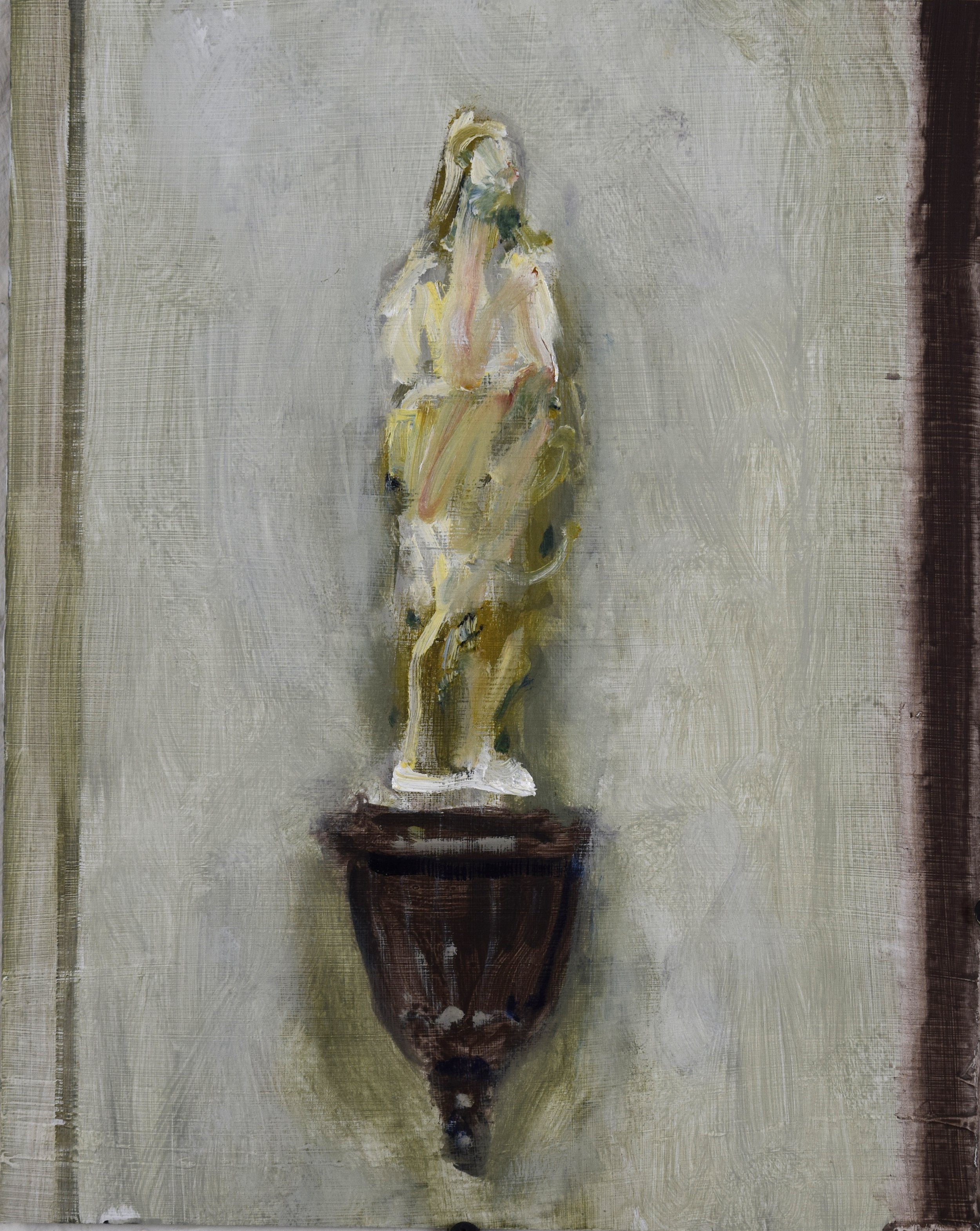Museum
Peter Wilde’s still life paintings of classical sculpture installed within the grandiose interior of old world museums, challenges the viewer to confront the role that spectacle plays in our experience as museum-goers. Wilde’s broad, gestural rendering of these familiar, archetypical figures effectively obliterates their identities and undermines their classical fetish for idealized surface and form. This erasure of the subjects’ identities brings the viewer’s attention to the subtleties of how, as objects, they become performative of both power and poise.
(continued below),
The paintings effectively conjure the palatial, hushed atmosphere of the 19th century museum, whose comprehensive design environment has the tendency to eclipse the objects’ critical histories, in favor of disinterested contemplation and mute spectacles of history. In the museum, pedestals, spot lighting, and architectural framings all aim to fix the gaze of the viewer on the reified subjects. In Wilde’s paintings, however, the physicality of the paint and the quandary of reproduction negate the museums reifying imperative, by disrupting our absorption in the museum’s atmosphere to confront the artifice of art. The artist’s painterly passages hover quietly between grace and violence, making their subjects estranged and blankly camouflaged in the interiors. In these paintings, are we witnessing the violence of history or is this the loving work of a painter entranced by the dream of the aesthetic? This tension is palpable in the work and vital to contemporary critical engagements with art and its institutions. Wilde’s work is atuned to the contradictory nature of his subject; though paint beckons in these works, at the same time the paintings refuse, thus effectively destabilizes any cozy relationship to either the art or its past. Benjamin Rubloff






























